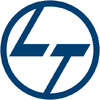
i
KEC
International
Filter interviews by
KEC International Safety Supervisor Interview Questions and Answers
10 Interview questions
Emergency Response Planning (ERP) involves preparing for and managing emergencies to ensure safety and minimize impact.
Identifies potential emergencies, such as fires, chemical spills, or natural disasters.
Establishes clear procedures for evacuation and communication during emergencies.
Conducts regular training and drills to ensure readiness among staff.
Involves coordination with local emergency services and stake...
Reporting a safety incident involves documenting details, notifying supervisors, and following protocols to prevent future occurrences.
Immediately assess the situation for safety and provide first aid if necessary.
Document the incident details, including time, location, and individuals involved.
Notify your supervisor or safety officer as soon as possible.
Complete an incident report form, detailing the nature of th...
Hazards are potential sources of harm or adverse effects on individuals or the environment, categorized into various types.
Physical Hazards: Examples include machinery, heights, and slippery surfaces.
Chemical Hazards: Involves exposure to harmful substances like acids, solvents, or pesticides.
Biological Hazards: Includes bacteria, viruses, and other pathogens that can cause illness.
Ergonomic Hazards: Related to re...
Risk is the potential for loss or harm arising from a hazard, often assessed in terms of likelihood and impact.
Risk involves uncertainty about outcomes, such as the chance of an accident occurring at a workplace.
It can be quantified by evaluating the probability of an event and its potential consequences, e.g., a fall from height.
Risk can be categorized into different types, such as operational risk (e.g., machine...
Safety is important to prevent accidents, injuries, and illnesses in the workplace.
Ensures the well-being of employees
Reduces the risk of accidents and injuries
Increases productivity and efficiency
Compliance with regulations and standards
Enhances company reputation and employee morale
JSA, or Job Safety Analysis, is a process to identify hazards and implement safety measures before starting a job.
JSA stands for Job Safety Analysis.
It involves breaking down a job into steps to identify potential hazards.
For example, in construction, a JSA might assess risks of working at heights.
JSAs help in developing safety protocols and training workers.
Regularly updating JSAs ensures ongoing safety improveme...
Documentation work for EHS department includes creating and maintaining safety policies, procedures, incident reports, training records, and regulatory compliance documents.
Creating safety policies and procedures
Maintaining incident reports
Managing training records
Ensuring regulatory compliance
Updating safety manuals and guidelines
Conducting risk assessments and documenting findings
Maintaining safety data sheets (...
A hazard is a potential source of harm or adverse health effect on a person or persons. Types of hazards include physical, chemical, biological, ergonomic, and psychosocial.
Hazard is a potential source of harm or adverse health effect
Types of hazards include physical, chemical, biological, ergonomic, and psychosocial
Physical hazards can include noise, vibration, radiation, and temperature extremes
Chemical hazards ...
Before gaining company experience, it is important to have a clear understanding of proper lifting procedures to prevent injuries.
Before starting any lifting task, assess the object's weight and size to determine the best approach.
Use proper lifting techniques such as bending at the knees, keeping the back straight, and using the legs to lift.
Avoid twisting while lifting and always ask for help if the object is to...
Safety refers to the measures taken to prevent accidents, injuries, and other hazards in the workplace.
Safety involves identifying potential hazards and taking steps to eliminate or minimize them.
It includes providing appropriate safety equipment and training to employees.
Regular safety inspections and audits are necessary to ensure compliance with safety regulations.
Effective communication and reporting systems a...
KEC International Safety Supervisor Interview Experiences
6 interviews found
- Q1. What is Emergency Response Planning (ERP)?
- Ans.
Emergency Response Planning (ERP) involves preparing for and managing emergencies to ensure safety and minimize impact.
Identifies potential emergencies, such as fires, chemical spills, or natural disasters.
Establishes clear procedures for evacuation and communication during emergencies.
Conducts regular training and drills to ensure readiness among staff.
Involves coordination with local emergency services and stakeholde...
- Q2. What is the definition of risk?
- Ans.
Risk is the potential for loss or harm arising from a hazard, often assessed in terms of likelihood and impact.
Risk involves uncertainty about outcomes, such as the chance of an accident occurring at a workplace.
It can be quantified by evaluating the probability of an event and its potential consequences, e.g., a fall from height.
Risk can be categorized into different types, such as operational risk (e.g., machinery fa...
- Q3. What are the different types of hazards?
- Ans.
Hazards are potential sources of harm or adverse effects on individuals or the environment, categorized into various types.
Physical Hazards: Examples include machinery, heights, and slippery surfaces.
Chemical Hazards: Involves exposure to harmful substances like acids, solvents, or pesticides.
Biological Hazards: Includes bacteria, viruses, and other pathogens that can cause illness.
Ergonomic Hazards: Related to repetit...
- Q4. What are the most common hazards in your workplace?
- Ans.
Common workplace hazards include slips, trips, falls, chemical exposure, and ergonomic issues that can affect employee safety.
Slips, trips, and falls: Wet floors or uneven surfaces can lead to serious injuries.
Chemical exposure: Improper handling of hazardous materials can cause health issues.
Ergonomic hazards: Poor workstation design can lead to musculoskeletal disorders.
Electrical hazards: Faulty wiring or equipment ...
- Q5. How do you report a safety incident or near-miss?
- Ans.
Reporting a safety incident involves documenting details, notifying supervisors, and following protocols to prevent future occurrences.
Immediately assess the situation for safety and provide first aid if necessary.
Document the incident details, including time, location, and individuals involved.
Notify your supervisor or safety officer as soon as possible.
Complete an incident report form, detailing the nature of the inc...

(3 Questions)
- Q1. Safety indection labour and work
- Ans. Erection safety Safety Indection Safety bell check Flow star roope check Flow star clam check Rectoguard slight check Pully check P.P.Roop check Steel roop check Drirec poll check Labor should be aware of the safety
- Q2. Safety indection labuor and work
- Q3. Educate labor first on safety issues Educate workers on safety issues TPT Check fastid box TMP and metrial check
Interview Preparation Tips
I applied via Job Fair and was interviewed before Sep 2023. There was 1 interview round.
(5 Questions)
- Q1. Before company experience. And lifting procedure
- Ans.
Before gaining company experience, it is important to have a clear understanding of proper lifting procedures to prevent injuries.
Before starting any lifting task, assess the object's weight and size to determine the best approach.
Use proper lifting techniques such as bending at the knees, keeping the back straight, and using the legs to lift.
Avoid twisting while lifting and always ask for help if the object is too hea...
- Q2. Why is important of safety
- Ans.
Safety is important to prevent accidents, injuries, and illnesses in the workplace.
Ensures the well-being of employees
Reduces the risk of accidents and injuries
Increases productivity and efficiency
Compliance with regulations and standards
Enhances company reputation and employee morale
- Q3. What is hazard and typ of hazard
- Ans.
A hazard is a potential source of harm or adverse health effect on a person or persons. Types of hazards include physical, chemical, biological, ergonomic, and psychosocial.
Hazard is a potential source of harm or adverse health effect
Types of hazards include physical, chemical, biological, ergonomic, and psychosocial
Physical hazards can include noise, vibration, radiation, and temperature extremes
Chemical hazards can i...
- Q4. What is your responsibility.
- Ans.
As a Safety Supervisor, my responsibility is to ensure a safe work environment by implementing and enforcing safety policies and procedures.
Implement and enforce safety policies and procedures
Conduct regular safety inspections and audits
Provide safety training to employees
Investigate accidents and incidents to determine root causes
Maintain safety records and documentation
- Q5. Why is join my company
Interview Preparation Tips
I applied via Approached by Company and was interviewed before Jul 2023. There was 1 interview round.
(2 Questions)
- Q1. Jsa kya hai jsa ka full from
- Ans.
JSA, or Job Safety Analysis, is a process to identify hazards and implement safety measures before starting a job.
JSA stands for Job Safety Analysis.
It involves breaking down a job into steps to identify potential hazards.
For example, in construction, a JSA might assess risks of working at heights.
JSAs help in developing safety protocols and training workers.
Regularly updating JSAs ensures ongoing safety improvements.
- Q2. Hira kya hai Hira ka full form

(1 Question)
- Q1. What is the safety
- Ans.
Safety refers to the measures taken to prevent accidents, injuries, and other hazards in the workplace.
Safety involves identifying potential hazards and taking steps to eliminate or minimize them.
It includes providing appropriate safety equipment and training to employees.
Regular safety inspections and audits are necessary to ensure compliance with safety regulations.
Effective communication and reporting systems are es...

Interview Preparation Tips
Interview Questionnaire
1 Question
- Q1. What is the documentation work for EHS department.
- Ans.
Documentation work for EHS department includes creating and maintaining safety policies, procedures, incident reports, training records, and regulatory compliance documents.
Creating safety policies and procedures
Maintaining incident reports
Managing training records
Ensuring regulatory compliance
Updating safety manuals and guidelines
Conducting risk assessments and documenting findings
Maintaining safety data sheets (SDS)
P...
Top trending discussions






Interview questions from similar companies

Safety Supervisor Interview Questions & Answers
Tata Projectsposted on 26 Oct 2021
I applied via Walk-in and was interviewed before Oct 2020. There were 3 interview rounds.
Interview Questionnaire
1 Question
- Q1. What is hazard and risk
- Ans.
Hazard refers to a potential source of harm, while risk is the likelihood and severity of that harm occurring.
Hazard is a condition, substance, or activity that has the potential to cause harm.
Risk is the probability and severity of harm that may result from exposure to a hazard.
Hazard identification involves recognizing potential sources of harm.
Risk assessment involves evaluating the likelihood and consequences of a ...
Interview Preparation Tips
Give right answer
Must be wear formal dress

I appeared for an interview before Apr 2021.

(1 Question)
- Q1. Share details of your previous job.
(2 Questions)
- Q1. Personal information and construction experience
- Q2. Near miss case training first aid report
Good
Interview Preparation Tips

Safety Supervisor Interview Questions & Answers
Larsen & Toubro Limitedposted on 11 Jan 2022
Interview Questionnaire
1 Question
- Q1. Full form SOP
- Ans.
SOP stands for Standard Operating Procedure.
SOP is a set of step-by-step instructions that outline how to perform a particular task or activity.
It provides guidelines for ensuring consistency, safety, and efficiency in operations.
SOPs are commonly used in industries such as manufacturing, healthcare, and aviation.
Examples of SOPs include emergency response procedures, equipment maintenance protocols, and quality contro...

I applied via Referral and was interviewed in Feb 2022. There were 4 interview rounds.

(1 Question)
- Q1. Wagon tippler overall process flow, WT hazards, TPI, Basic daily documents requirement.
(1 Question)
- Q1. Hazards of confined space, Percentage of O2 in confined space for safe working, Conveyor Hazards, Work permit system, CAPA, JHA, Welding and gas cutting hazards, Safety devices in conveyor.
- Ans.
The interview question covers various safety hazards and procedures related to confined spaces, conveyor systems, welding, and gas cutting.
Confined space hazards include lack of oxygen, toxic gases, and physical hazards
Safe working percentage of O2 in confined space is 19.5% or higher
Conveyor hazards include pinch points, entanglement, and falling objects
Work permit system is used to ensure that all necessary safety me...
(3 Questions)
- Q1. What are your salary expectations?
- Ans.
I expect a competitive salary that reflects my experience and the responsibilities of the Safety Supervisor role.
Based on industry standards, I believe a salary range of $60,000 to $80,000 is appropriate for this position.
I have over 5 years of experience in safety management, which I believe justifies a higher salary within that range.
I am open to discussing benefits and bonuses that could complement the base salary.
- Q2. What is your family background?
- Q3. Share details of your previous job.
Interview Preparation Tips
KEC International Interview FAQs
Tell us how to improve this page.
KEC International Interviews By Designations
- KEC International Assistant Manager Interview Questions
- KEC International Senior Engineer Interview Questions
- KEC International Project Manager Interview Questions
- KEC International Project Engineer Interview Questions
- KEC International Manager Interview Questions
- KEC International Safety Officer Interview Questions
- KEC International Safety Supervisor Interview Questions
- KEC International Civil Engineer Interview Questions
- Show more
Interview Questions for Popular Designations
Overall Interview Experience Rating
based on 10 interview experiences
Difficulty level
Duration
Safety Supervisor Interview Questions from Similar Companies
KEC International Safety Supervisor Reviews and Ratings
based on 47 reviews
Rating in categories
|
Assistant Manager
690
salaries
| ₹5.2 L/yr - ₹20 L/yr |
|
Senior Engineer
476
salaries
| ₹4.3 L/yr - ₹14 L/yr |
|
Safety Officer
212
salaries
| ₹0.4 L/yr - ₹8.1 L/yr |
|
Project Engineer
196
salaries
| ₹3 L/yr - ₹11 L/yr |
|
Civil Engineer
194
salaries
| ₹2.2 L/yr - ₹9.5 L/yr |

Larsen & Toubro Limited

L&T Construction

Tata Projects

Kalpataru Projects International
- Home >
- Interviews >
- KEC International Interview Questions












